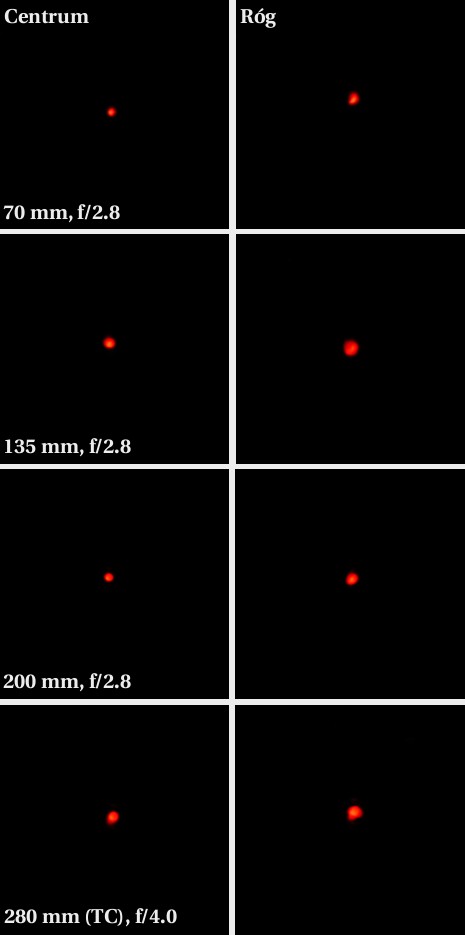Sigma 70-200 mm f/2.8 II EX APO DG Macro HSM
7. Coma and astigmatism
Please Support UsIf you enjoy our reviews and articles, and you want us to continue our work please, support our website by donating through PayPal. The funds are going to be used for paying our editorial team, renting servers, and equipping our testing studio; only that way we will be able to continue providing you interesting content for free. |
- - - - - - - - - - - - - - - - - - - - - - - - - - - - - - - - - - - - - - - - - - - - - - - -
The cause of the lower performance at the edge of the frame, compared to Nikkor 80-200 mm f/2.8 and Sigma 70-200 mm f/2.8 in the I version we can find, among other things, in off-axial aberrations like coma and astigmatism. As you can see from the picture below, coma in Sigma 70-200 mm f/2.8 II doesn’t reach large dimensions, but its influence is visible. It looked better in the predecessor and Nikkor.

The situation looks even more seriously when we look at astigmatism. This is a noticeable slip-up. Its average value equals 14.3%, which isn’t something to praise, all the more so because astigmatism increases with the focal length and at 70 mm is quite small (5%), to reach over 20% at longer focal lengths. As if that astigmatism is “sitting” in the lens itself, we shouldn’t be surprised by the fact that adding the converter intensifies this aberration noticeable and it reaches as much as 27% there… The slip-up is even more serious, considering the predecessor had slight astigmatism.






